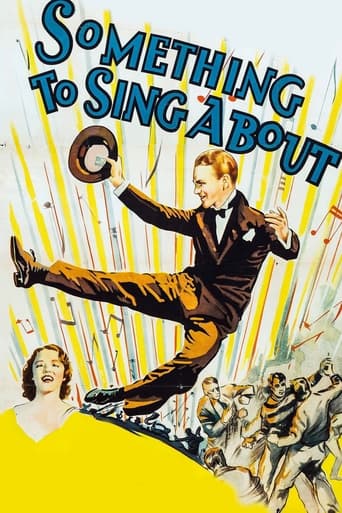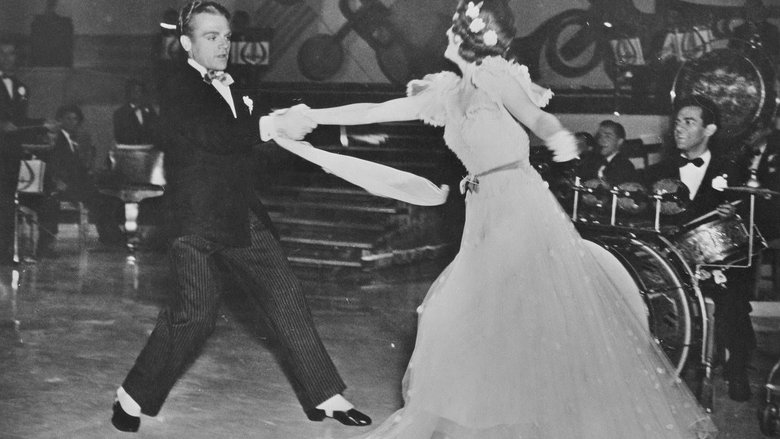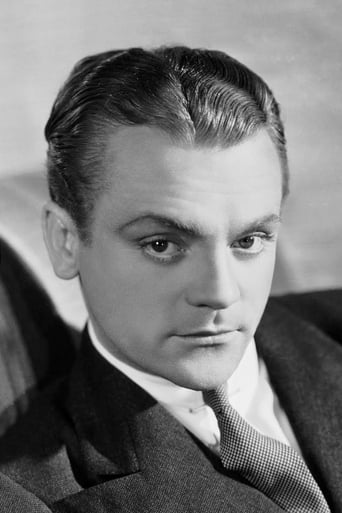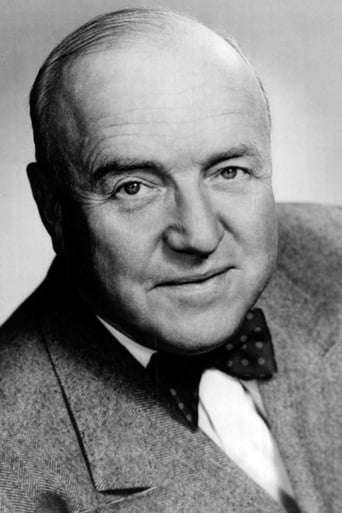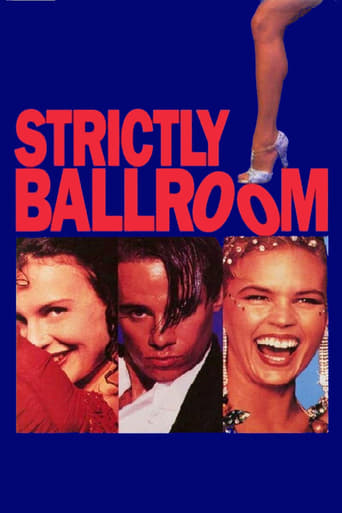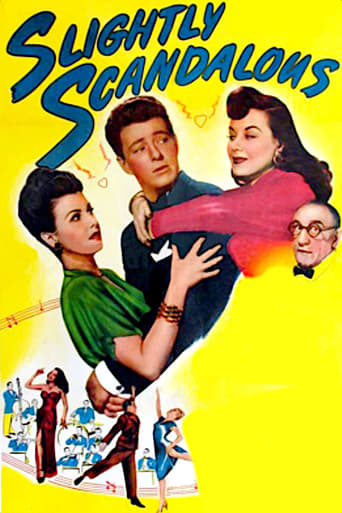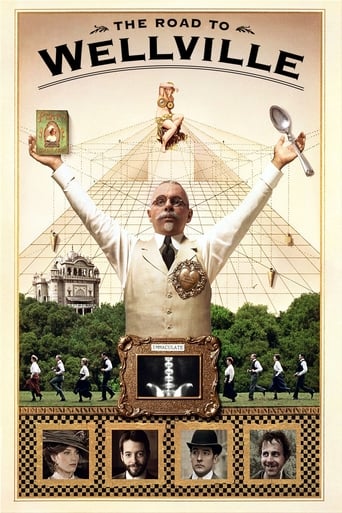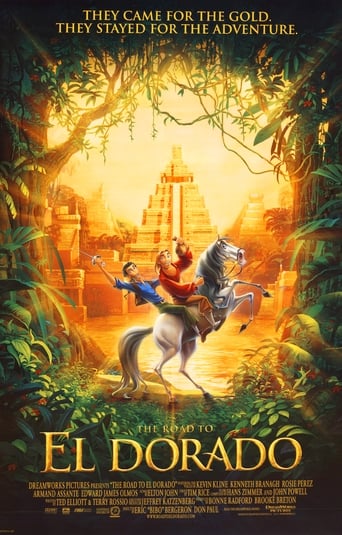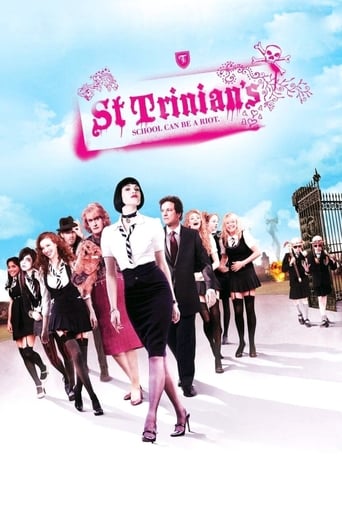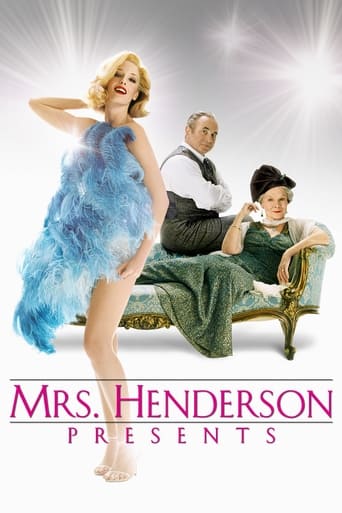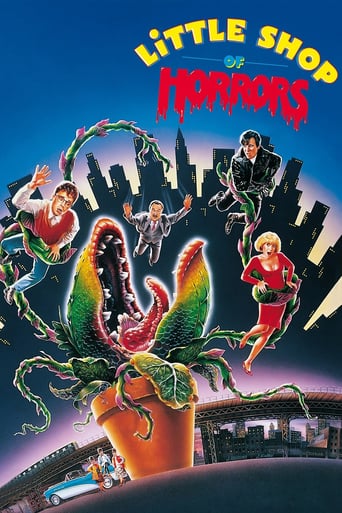Something to Sing About (1937)
James Cagney has a rare chance to show his song-and-dance-man roots in this low-budget tale of a New York bandleader struggling with a Hollywood studio boss.
Watch Trailer
Cast
Similar titles
Reviews
An Exercise In Nonsense
There's no way I can possibly love it entirely but I just think its ridiculously bad, but enjoyable at the same time.
One of the worst ways to make a cult movie is to set out to make a cult movie.
The thing I enjoyed most about the film is the fact that it doesn't shy away from being a super-sized-cliche;
This is the film that supposedly sank fledgling Grand National Films after an only three-year existence. Supposedly costing $900,000, the failure of this film sealed the studio's fate. While this is an enjoyable film with pleasant songs and attractive players, I find it hard to believe that cost assessment. The settings are attractive, but not lavish, and aside from James Cagney, there are really no box-office champs here that would require a hefty salary. Evelyn Daw was charming and a very good singer in this, and she supposedly made just one other film before yawing into oblivion. She deserved a better chance at success. There are some familiar faces among the supporting cast such as William Frawley and Gene Lockhart. Phillip Ahn has a surprisingly non-stereotypical role as Cagney's man-Friday, and Mona Barrie is good as a temperamental co-star for Cagney. The print on my DVD is clear and in pretty good shape. A good example of cinema from the mid-to-late '30s.
SOMETHING TO SING ABOUT (Grand National, 1937), directed by Victor Schertzinger, stars movie tough guy James Cagney in his second screen musical. Though not in the Busby Berkeley tradition as FOOTLIGHT PARADE (1933) where Cagney sang and dance for the first time, nor academy award potential as his legendary performance of YANKEE DOODLE DANDY (1942), it does offer Cagney a slight departure from his usual style. He's not a wiseacre nor is he slapping dames around. Although still handy with his fists when in need of them, there's a gentle side to his nature, especially his loyalty to the girl he loves. As a band-leader, Cagney gets to do some fancy footwork, yet, much of the musical interludes go to newcomer Evelyn Daw. Resembling French actress Simone Simon (CAT PEOPLE,1942) and a diva singing voice of Jeanne Madden (STAGE STRUCK,1936), Daw's film career was as short-lived as Grand National Studios itself. Slightly better than Cagney's Grand National debut, GREAT GUY (1936) due to its higher budget and reasonable plot, SOMETHING TO SING ABOUT also marked his second and farewell with the studio.Following the pattern of a Hollywood story, though not as famous as David O. Selznick's A STAR IS BORN (1937), the plot revolves around Terry Rooney (James Cagney), a New York band-leader, with Rita "Canary" Wyatt (Evelyn Daw), the girl he loves, as his lead singer. He leaves them behind when called to Hollywood to be tested for the upcoming motion picture, "Any Old Love." Arriving by train and met by Hank Myers (William Frawley), his publicity man, and Bennett O. Regan (Gene Lockhart), president of Galor Studios, Terry finds himself going through the motions by being taught to speak correctly by the dialog coach (Marek Windheim) costume changes by the wardrobe man (Johnny Arthur); going through extremes on how to look by the make-up man (Dwight Frye); and the way how he should act by his director (Richard Tucker). During a scene, Terry loses his temper and tears up the set. With all this captured on film, it is used for the sneak preview that turns Terry into an overnight star. Unaware of how good he is, Terry, who has sent for Rita, marries her, and goes on his honeymoon to the South Seas. Upon his return, Terry (real name Thaddius McGillicuty), discovers he's a sensation and is offered a long term studio contract. He's unable to accept due to a clause that forbids him to marry. At Rita's request, he decides to abide by the studio rules, with Rita acting as his confidential secretary. Their marriage soon falls apart when Terry's name becomes romantically linked with Russian actress Stephanie Hajos (Mona Barrie).Other members of the cast worth mentioning include Kathleen Lockhart as Emmy Robbins, a gossip columnist; James Newill, Candy Candido and Harry Barris as members of the band; William B. Davidson as Mr. Richards, the night club manager; and Philip Ahn as Ito, Terry's servant and friend who realistically shows the two ways Japanese speak, articulately, and the Hollywood stereotype of Japanese lingo ("Yes, honorable mastah"). This is something rare in movies from this era, bringing out into the open that Orientals converse just like everyone else.Although the story is routinely done, the songs, written by Victor Schertzinger, come off as unmemorable, though a couple of dance numbers help out during the dull stretches. The song include: "Something to Sing About" (sung by Evelyn Daw during opening titles); "Here Comes the Bride" (danced by James Cagney); "Right or Wrong." (sung by Daw); "Any Old Love" (sung by Cagney); untitled dance number (performed by Cagney and male dancers); "Out of the Blue" (sung by Daw) and "Something to Sing About/"Out of the Blue" (reprise). Aside from Cagney's dancing, the title song comes off best, and is used considerably in underscoring through much of the story, along with "Out of the Blue." "Right or Wrong" the film's weaker song, is vocalized by Daw on a long distance telephone call to Hollywood with Terry (Cagney) listening on the other end.When SOMETHING TO SING ABOUT resurfaced on commercial television in the 1970s, it played under another title, THE BAFFLING HOOFER, actually from a 1940s reissue print 15 minutes shorter than the original 93 minute length. A decade later, it turned up under its original title, and being a movie that fell victim to public domain, was distributed on video cassette through various companies. For years, video copies of SOMETHING TO SING ABOUT were inferior either audio or visually. Its cable broadcasts such as on the Nick-at-Nite Movie on Nickelodeon during the 1980s, and American Movie Classics (1989-1990) were vast improvements. SOMETHING TO SING ABOUT has later been restored with much better copies presented on Turner Classic Movies, where it premiered August 2, 2005, and finally DVD.In closing, without the presence and charisma of James Cagney, SOMETHING TO SING ABOUT might have remained in some dark archive, along with other Grand National releases (1936-1939). Generally, the movie itself is okay, but not nearly as fun as LADY KILLER (1933), Cagney's earlier venture into Movieland. As with other films with a similar theme, it goes through the motions with behind the scenes of movie making and how fame and fortune may or may not be for the main character in question. This movie may not be something to sing about, but actually something to consider since it's a chance to see Cagney in rare form, starring in a musical and an independent production outside his home base of Warners. A fine supporting cast of veteran actors (Frawley and Lockhart) helps. (***)
This very well produced film from Grand National was it's downfall.Costing $900k in 1937 to produce (3 times more than 42nd Street or a quarter of Gone With The Wind) it never recovered its costs and sank the studio. A mini major wannabe of its day, it grew from the reshuffle in 1934 that saw Monogram, Liberty, Mascot and Majestic studios all become Republic. Tiffany studios had gone dark about 1932 and Grand National reopened that lot in 1935 amid the talent and exec merry go round of forming and shedding.A Warners squabble saw Cagney suspended so he walked to Grand National who much have thought they had won the talent lottery. To create industry credibility in their production values for any Cagney film, they had to spend big, and GREAT GUY in 1936 worked. But in 1937 their swing musical based loosely on their own studio tales (and lot) cost far too much and the loss by 1938 shortened their schedule and they went dark. Most jumped ship to re-formed Monogram Pictures and series films like the Shadow and Renfrew Of the Mounted Police had a new life there. Grand National had big hopes and plans and it is a huge shame they did not continue. It is a fascinating true story of ambition and crash and should be a film in itself. SOMETHING has been available in Australia on tape and DVD for years and is widely available here..like a lot of weird and small RKO titles. Lucky us and lucky you if you can find them. Grand national was a good outfit. The opening and closing nightclub scenes in this film are really smart and quite elaborate. There's even a BIG-like keyboard dance solo. And that Logo! Wow!
Weary of railing against Warner Brothers for the studio's mishandling of him, James Cagney moves to small Grand National, which produces for the star this sprightly musical compote. Cagney brings along all of his vigor and verve, and the little-known studio supplies a substantial budget for this tale of a Manhattan hoofer and bandleader, Terry Rooney (Cagney), and his sweetheart/wife (Evelyn Daw), who journey to Hollywood when Rooney is offered a film contract. Down-to-earth Rooney is resistant to receiving the prescribed "star treatment" and the head of the studio, Mr. Regan, (Gene Lockhart) construes his attitude as hauteur; when the initial film made with Rooney unexpectedly becomes wildly successful, the studio boss tries to keep the compass of his triumph from the budding star to prevent the latter from becoming more arrogant. Meantime, Rooney places his film experiences behind him by taking his bride on a lengthy cruise in a tramp steamer to the South Seas, and when they return and discover his exploding fame, comedic complications ensue. Cagney displays his customary class in his every scene with the musical production numbers being particularly effective, his dancing skill being a prominent element. True soprano Evelyn Daw performs beautifully throughout, and the classically trained singer makes for a comely female lead as well, while William Frawley as a press agent, Mona Barrie as the studio diva, and Philip Ahn, who plays Rooney's houseboy, all provide enjoyable turns. Director Victor Schertzinger utilizes his own Academy Award nominated score to a liberal extent throughout and the product becomes a tuneful and rather undervalued musical comedy.
